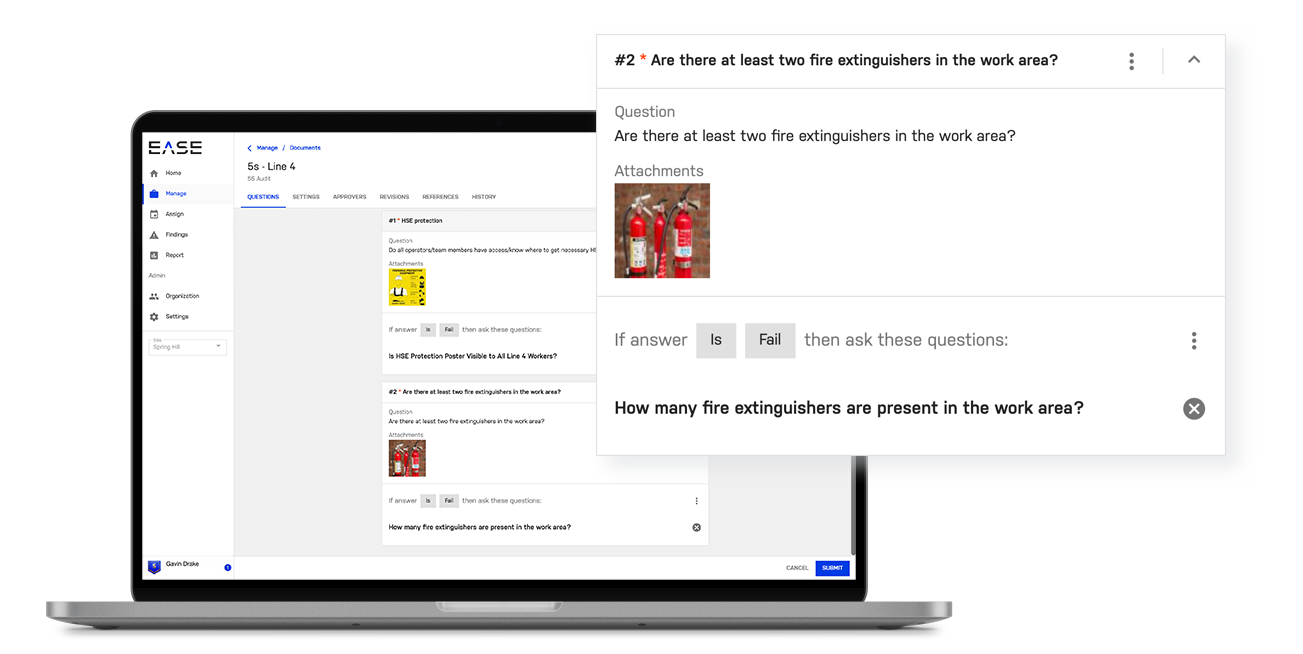How to Use Conditional LPA Questions to Improve Plant Floor Safety


Incorporating safety questions into layered process audit (LPA) checklists helps manufacturers monitor safety compliance daily so safety issues are caught before they cause injuries.
Taking place every shift, LPAs add multiple levels of verification and make quality a habit, providing a quick, cost-effective way to prevent defects and safety problems.
So how can manufacturers get more from their safety questions to ensure that they aren’t just checking the box? One way is by adding conditional questions to LPA checklists, allowing you to capture more detail and address risks specific to the work area.
In this post, we look at how conditional questions work and explore some examples, plus how to write conditional questions for maximum impact.
Learn more about Advanced Question Logic and the other new features in the EASE Spring 2022 Release
Why Use Conditional LPA Questions?
Using conditional LPA questions provides several advantages for manufacturers:
- Deeper insights: Adding conditional questions allows you to determine the type of safety failure that occurred, for example what type of PPE the operator is missing. This can improve the effectiveness of both root cause analysis and corrective action.
- Keeping checks short: Conditional questions allow you to assess multiple safety risks in one inspection, or quickly exclude questions as needed. For example, rather than asking five forklift questions that don’t apply to a given work area, you can include a preconditional question on whether a forklift is even present.
- Preventing pencil-whipping: If you can have one question that keeps you from asking three to four more, that shortens the audit and prevents pencil-whipping.

Tips for Writing Conditional Questions
Each conditional question you include on your checklist should start with a preconditional pass/fail question that leads to follow-up questions. If you’re using plant floor inspection software, follow-up questions may take the format of:
- Numeric value such as a pressure setting or number of fire extinguishers in the work area
- Multiple choice or multiple selection, such as the types of PPE being worn
- Free text, for example when asking a question whether the operator has any feedback to share on the process or safety issues
LPA software like EASE makes this even more powerful by allowing you to search the text captured in open-ended questions so you can data mine them later for patterns. It’s critical to link mitigations to each failed question, closing the loop to eliminate any risks identified during the inspection.
When writing conditional questions, it’s also important to keep in mind best practices for writing LPA questions in general. Questions should be concise and clear enough that someone who doesn’t work on the plant floor could answer them quickly. They should also be specific to the work area and have clear pass/fail criteria. Finally, you should include the reason for the question so the auditor knows why it’s important.
Conditional questions are a useful tool for gaining specific insights into safety risks, improving root cause analysis and preventing people from pencil-whipping audits. Mobile inspection software makes it easier, improving visibility while streamlining plant floor checks overall, so you can stay on top of hidden safety risks and address them proactively.
